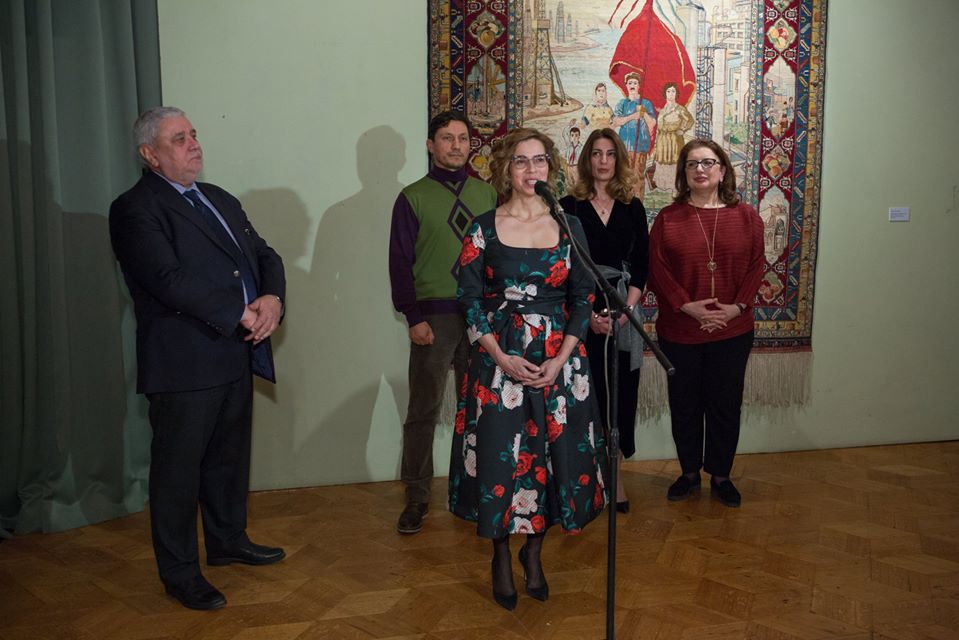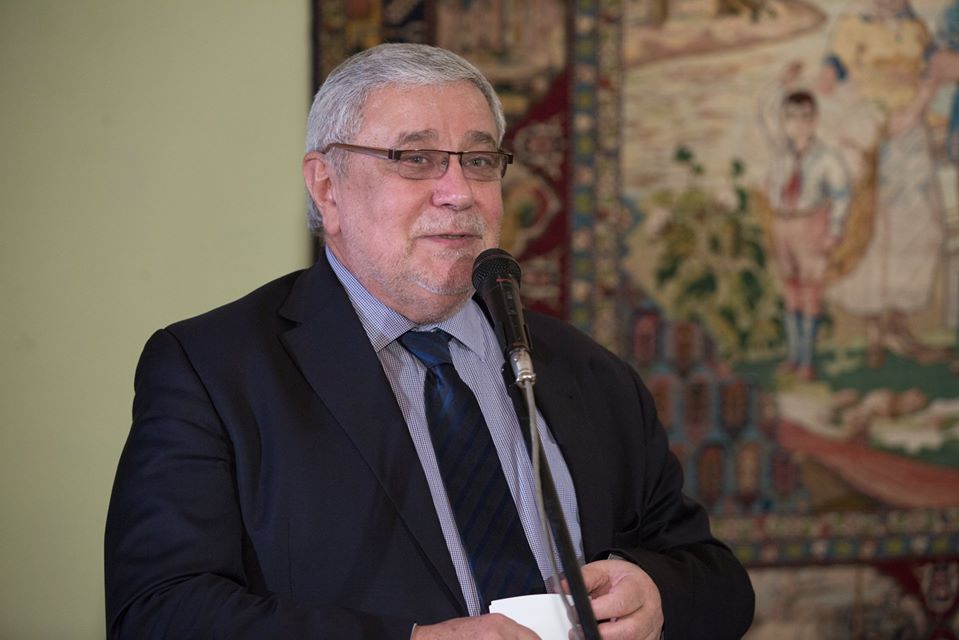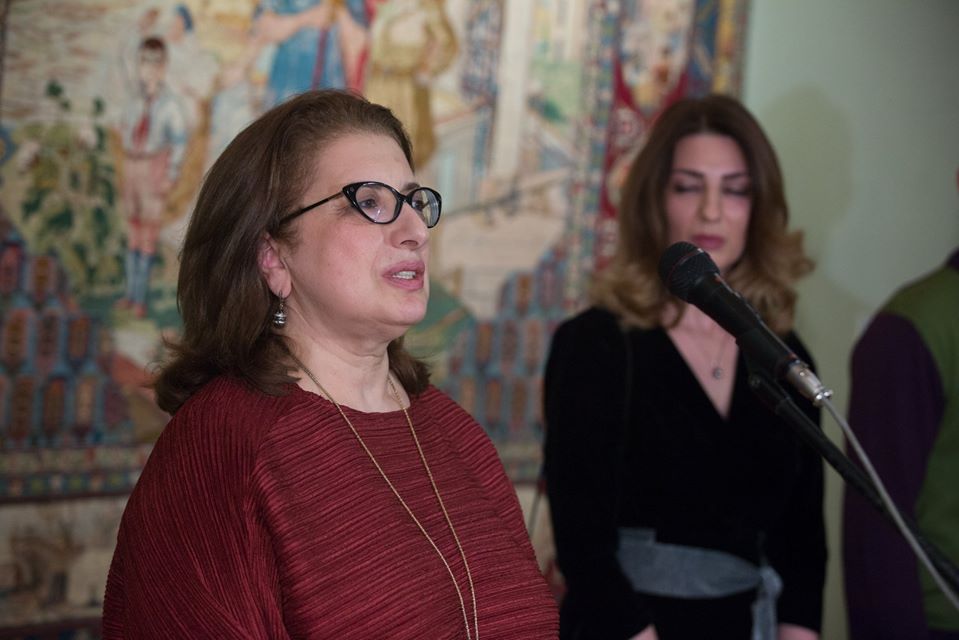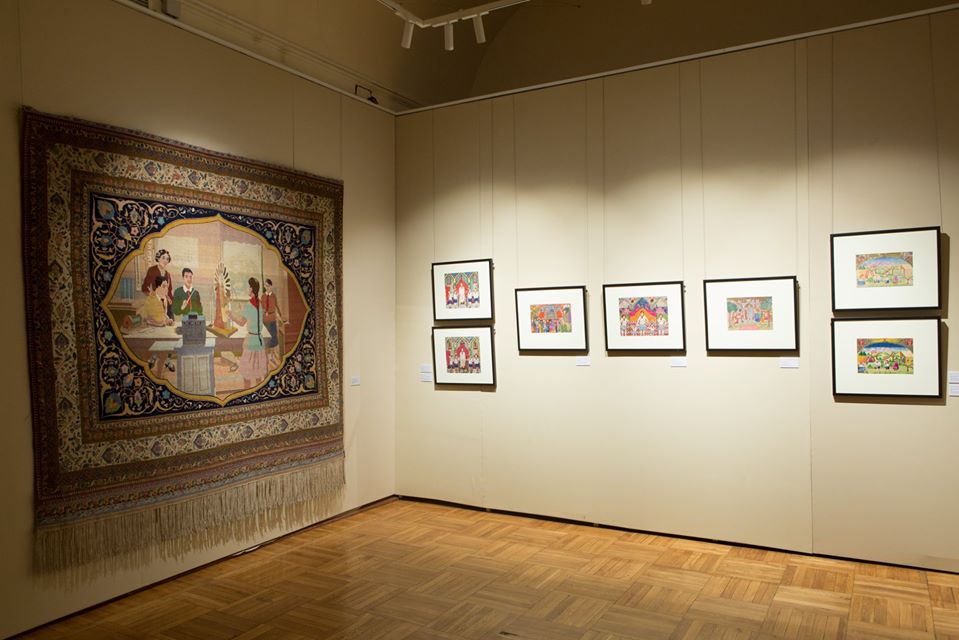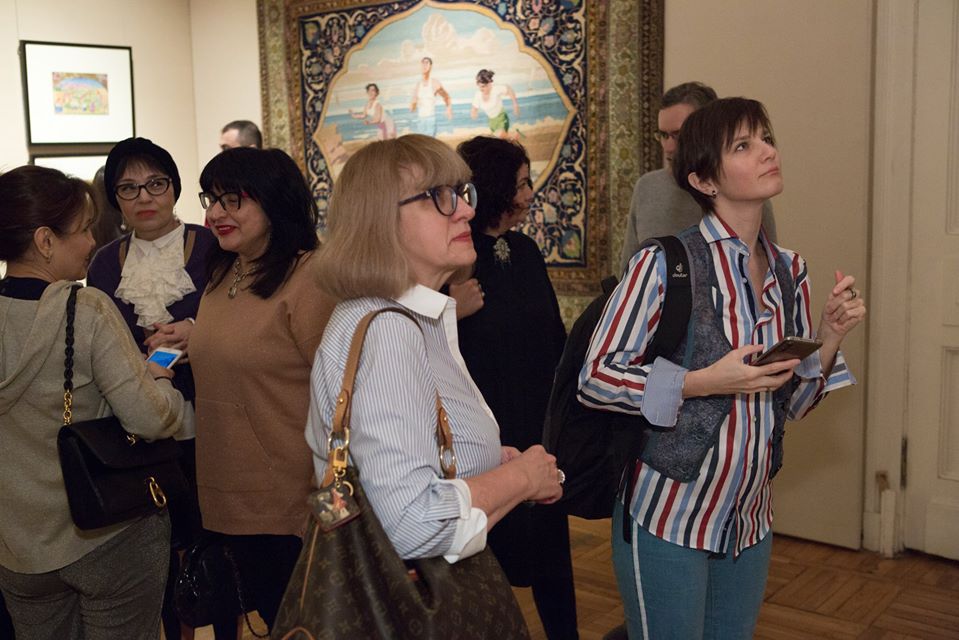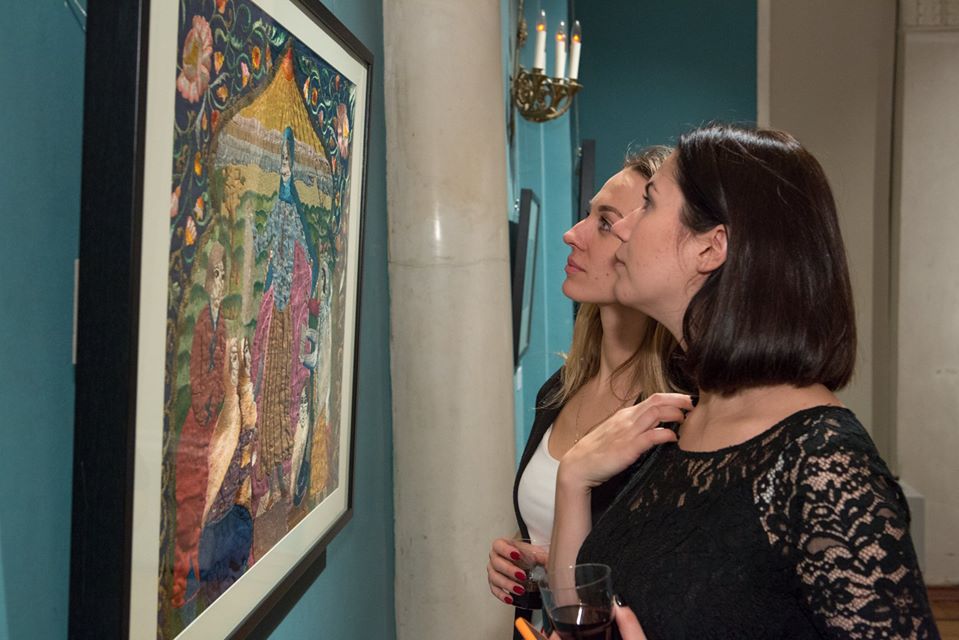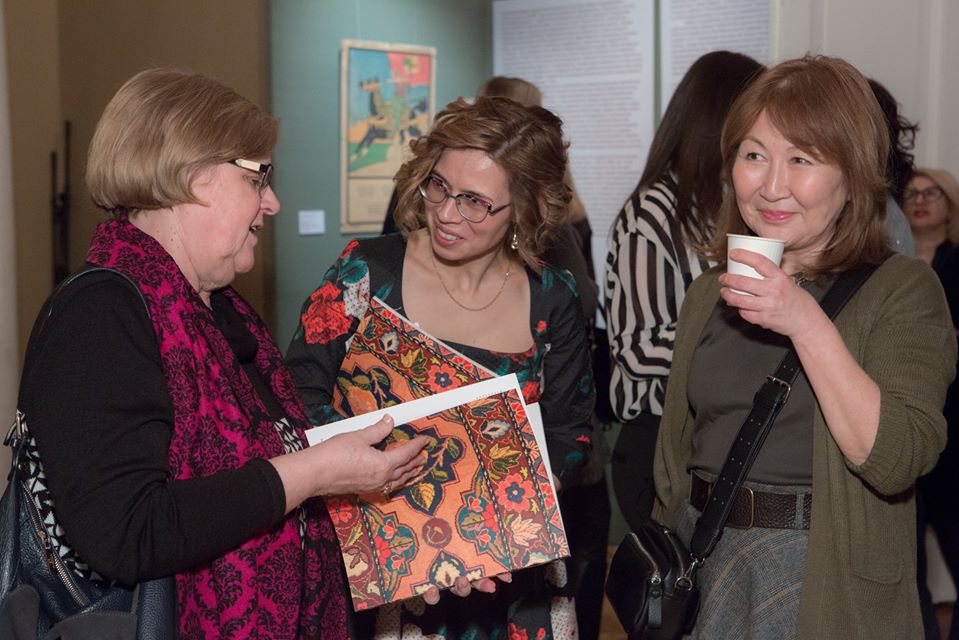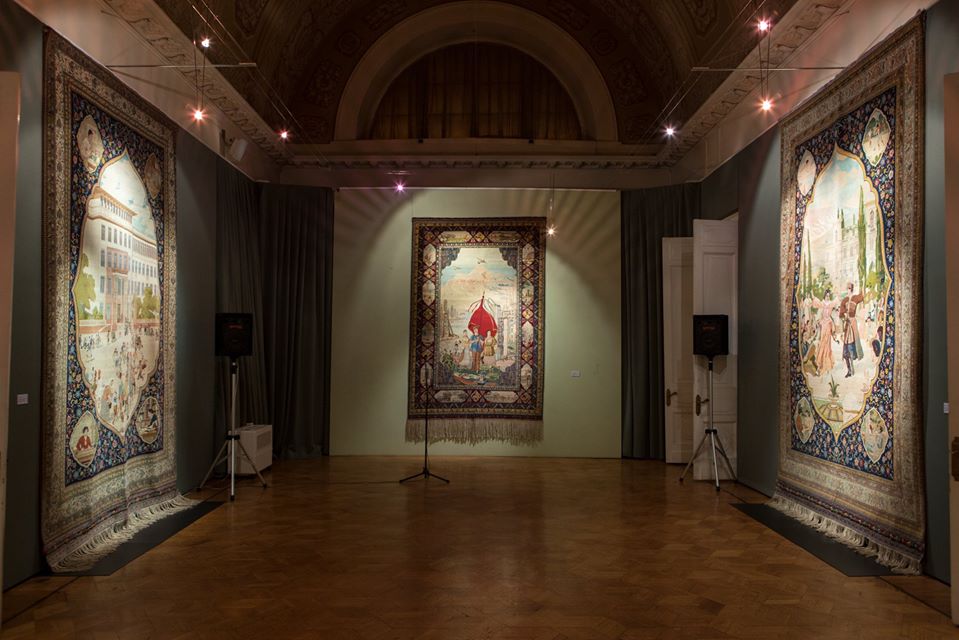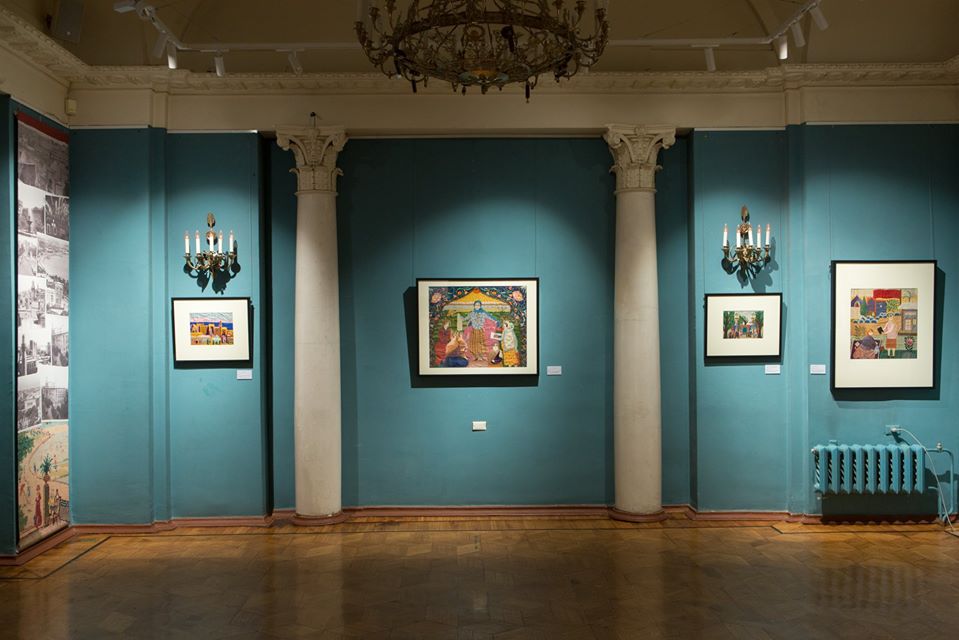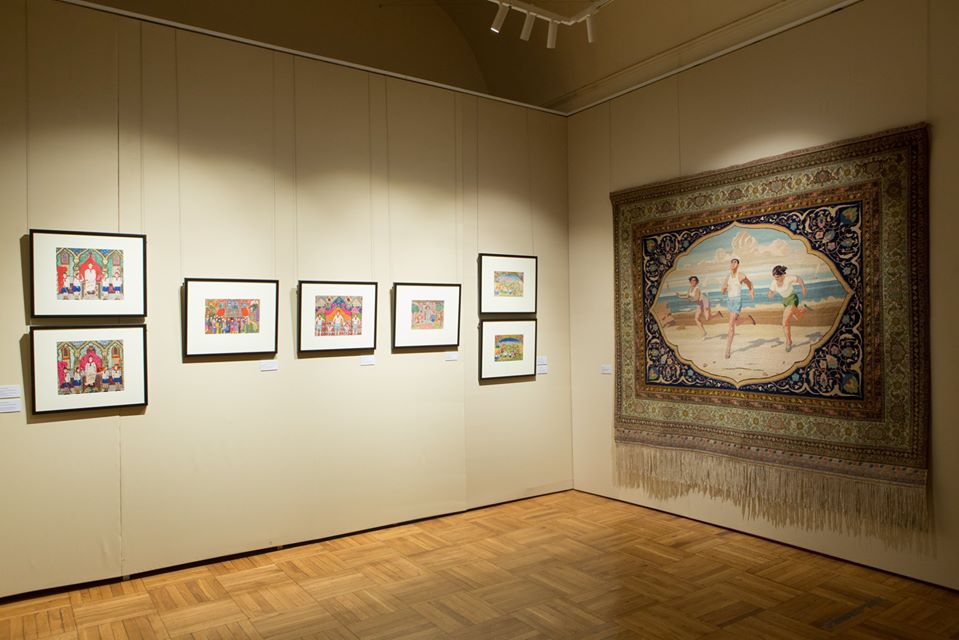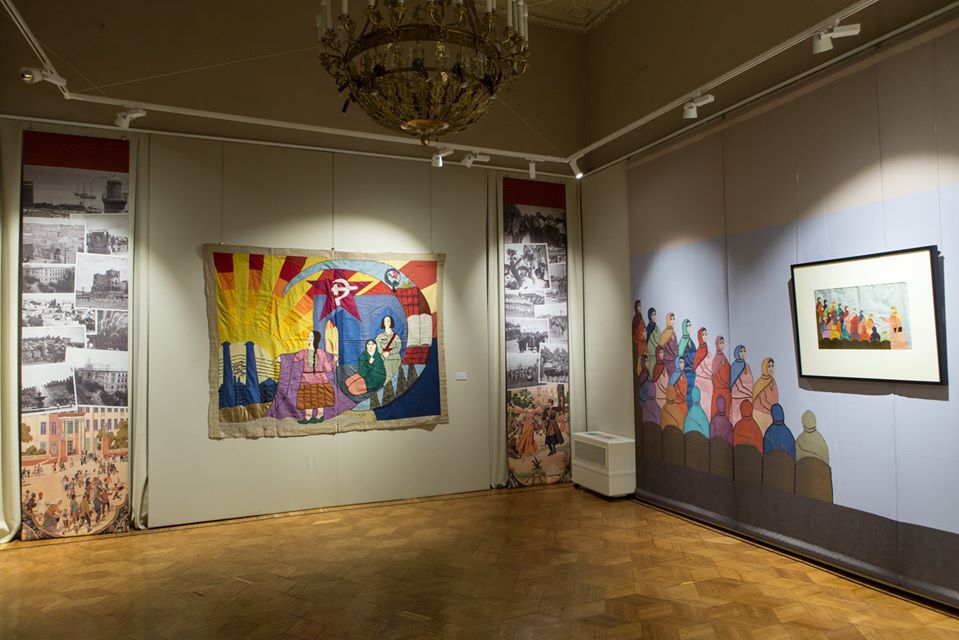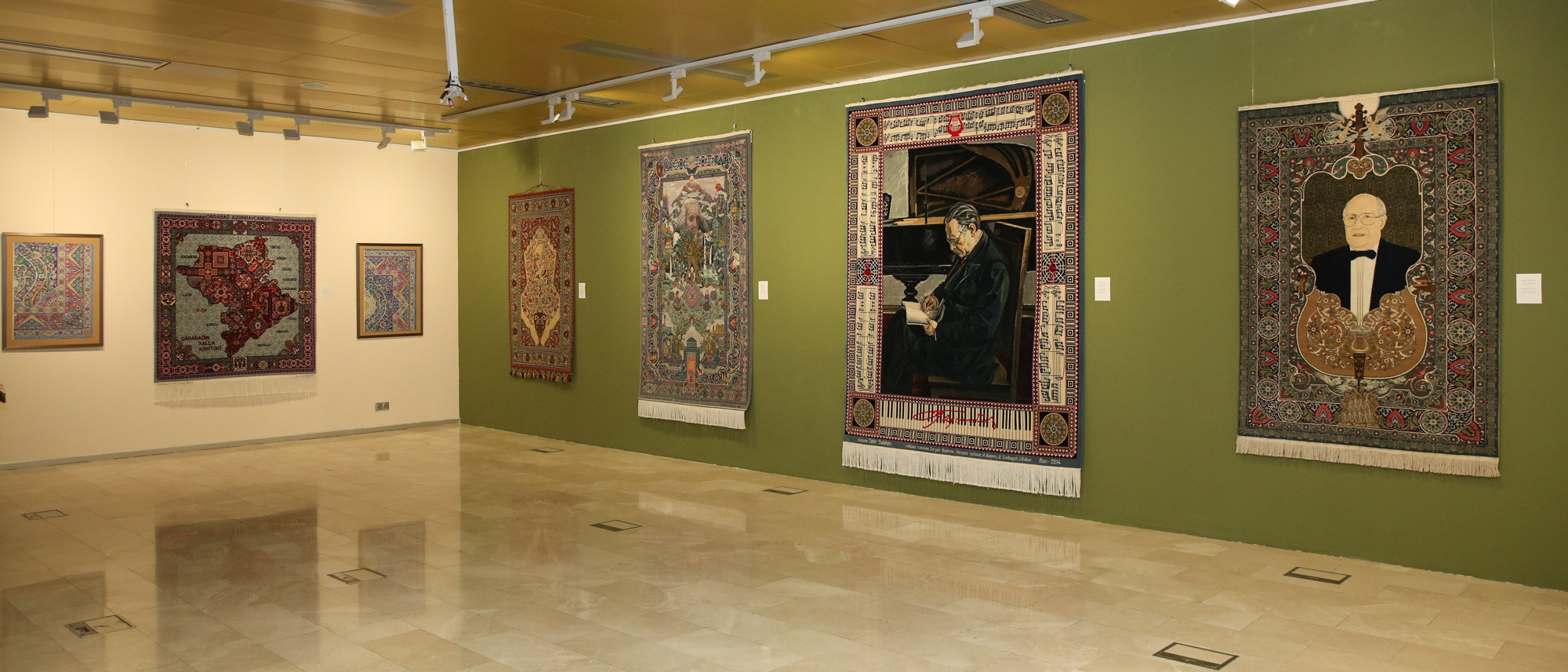Exhibition Echo of Soviet Azerbaijan. Carpet. Embroidery. Poster in Moscow
Azerbaijan National Carpet Museum and State Museum of Oriental Art presented a joint exhibition Echo of Soviet Azerbaijan. Carpet. Embroidery. Poster in Moscow on February 4. The exhibition was organized within the support of the Ministry of Culture of Azerbaijan, the Ministry of Culture of the Russian Federation, the Embassy of Azerbaijan in the Russian Federation, and the Mardjani Foundation. Shirin Melikova (Azerbaijan National Carpet Museum), Maria Filatova, Vera Myasina (State Museum of Oriental Art) are the exhibition curators.
The exhibition aroused great interest among Russian mass media, guests and the diplomatic corps. Alexander Sedov, Director of the State Museum of Oriental Art thanked the Azerbaijan National Carpet Museum for the cooperation and noted that this is museums’ second joint exhibition. Shirin Melikova, Director of the Azerbaijan National Carpet Museum emphasized that halls of this exhibition chronologically continue one another. If last year’s exhibition Harmony of Spacereflected traditions of centuries-old folk art aesthetic (interior, costume, etc.), the current one shows changes of these traditions in the Soviet era. Maria Filatova, exhibition curator spoke about the project idea, its progress, and realization. Nigar Akhundova, Cultural Attache of the Embassy of Azerbaijan to the Russian Federation, and Rustam Suleymanov, President of the Mardjani Foundation also deliver speeches at the opening ceremony.
Echo of Soviet Azerbaijan. Carpet. Embroidery. Poster narrates about the phenomenon of the impact of historical cataclysms on decorative and applied arts. The exhibition features forty exhibits: carpets of 1920-1970s from the collection of the Azerbaijan National Carpet Museum (Baku); carpets, revolutionary embroideries and their sketches of the 1920-1930s from the collection of the State Museum of Oriental Art (Moscow); posters from the collection of Mardjani Foundation (Moscow). Moreover, the State Museum of Oriental Art will display propaganda textiles from its collection for the first time in its entirety. All objects served as effective tools of political propaganda in the fullness of time. Now they are perceived beyond that, and the ideological coloration is interpreted as a precedent embodied in ancient crafts such as carpet weaving and embroidery.
Notably, this year marks the 10th anniversary of the inclusion of the Traditional Art of Azerbaijani Carpet Weaving within the UNESCO Representative List of Intangible Cultural Heritage of Humanity. And this is the best evidence of the fact that the Azerbaijani carpet ever-living and prosperous.
On top of that, the Azerbaijan National Carpet Museum and the State Museum of Oriental Art presented the same name catalog to the audience.
The exhibition will last until March 1.
